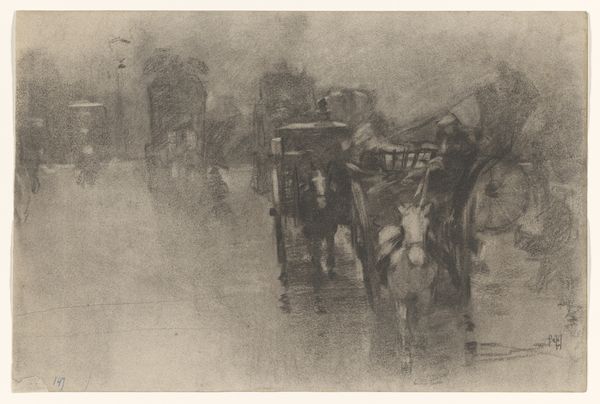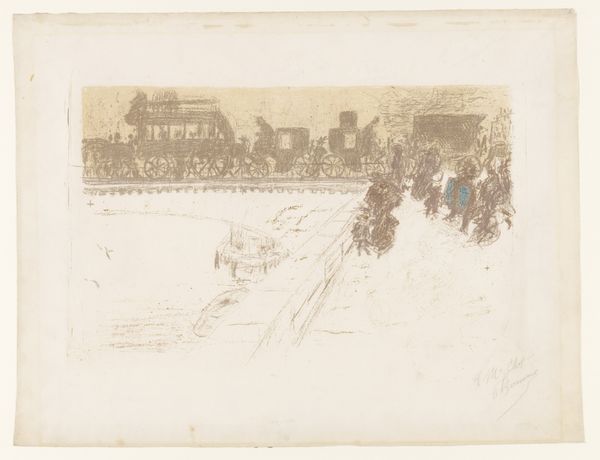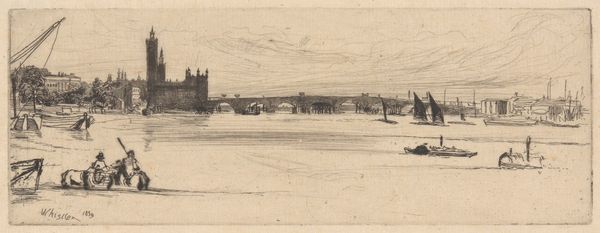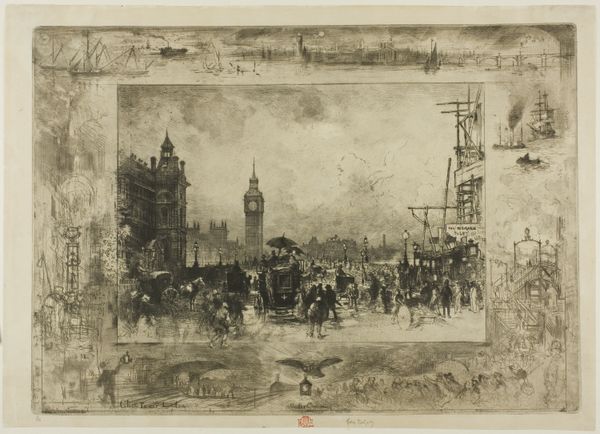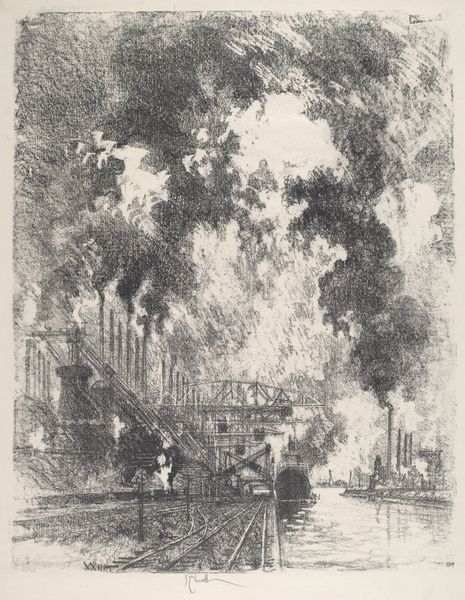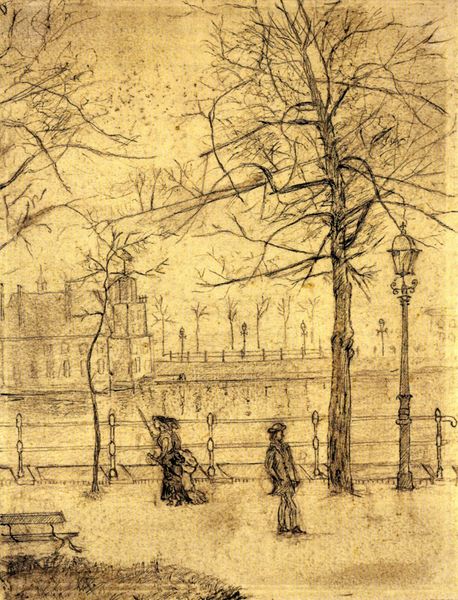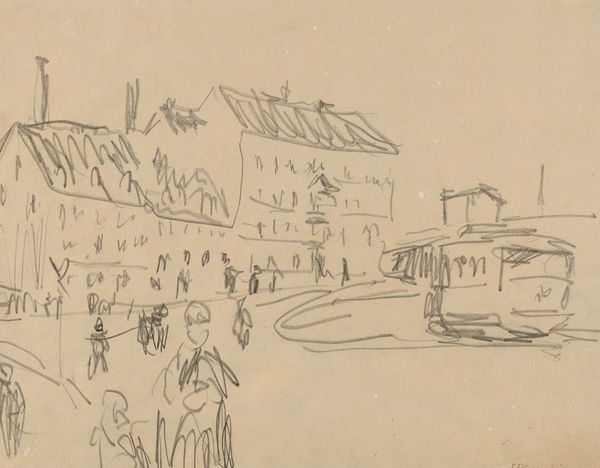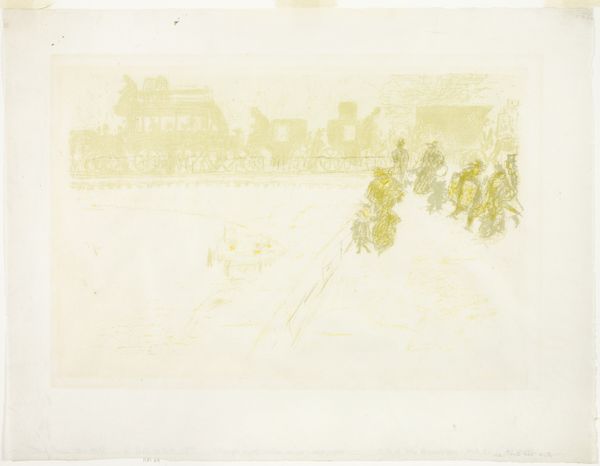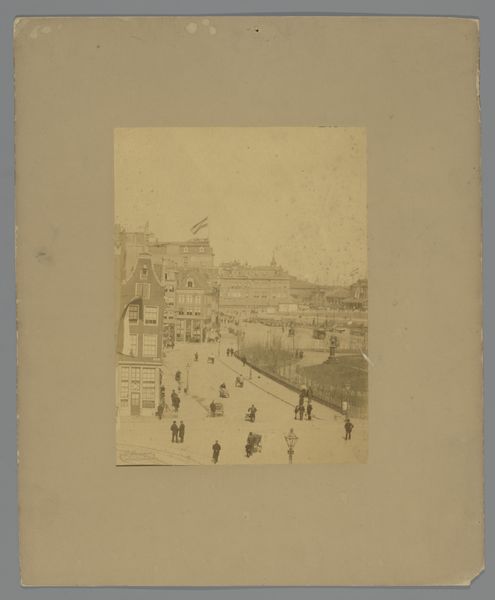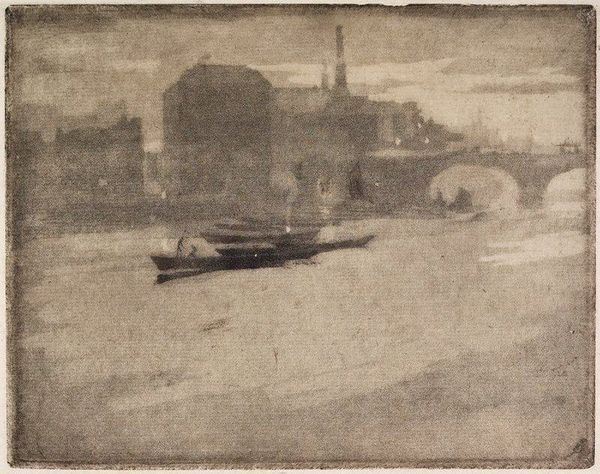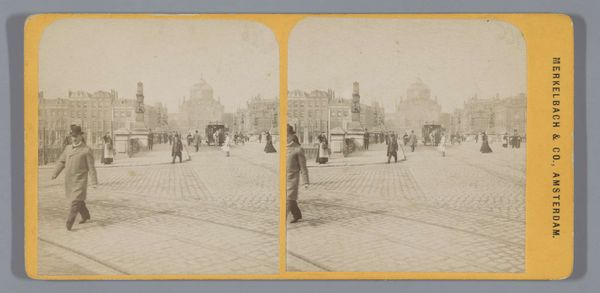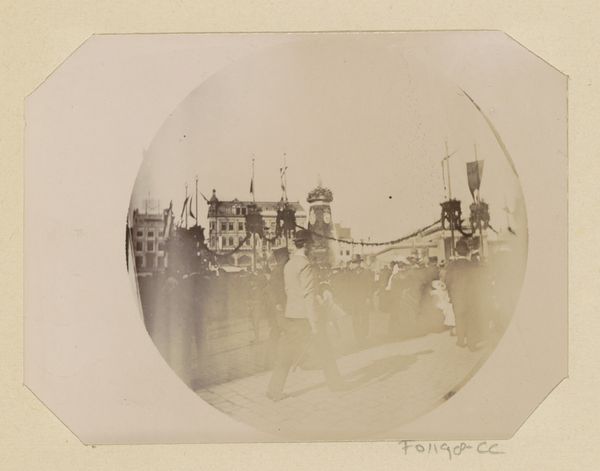
drawing, pen
#
drawing
#
quirky sketch
#
impressionism
#
pen sketch
#
sketch book
#
landscape
#
personal sketchbook
#
sketchwork
#
pen-ink sketch
#
pen work
#
sketchbook drawing
#
pen
#
cityscape
#
storyboard and sketchbook work
#
sketchbook art
Copyright: Public Domain: Artvee
Curator: Welcome, everyone. Let’s take a closer look at Childe Hassam's "Rainy Day, Boston" from 1886. This captivating sketch rendered in pen offers a glimpse into the urban experience. Editor: Ah, yes, immediately I’m hit by this melancholic charm, don't you think? It’s like peering through a rain-streaked window, watching a forgotten city breathe. The scene almost whispers secrets. Curator: Precisely. Notice the emphasis on materiality, the rough texture of the paper is essential to understand. This piece wasn't intended as a polished finished work but a quick observation using minimal materials—a pen, ink, and readily available paper. Consider also the labor involved; sketching on location would require confronting the very weather conditions it depicts. Editor: The simplicity is deceptive, isn’t it? I adore how just a few deft strokes convey movement and the glistening, slick city streets. The horse-drawn carriage and silhouetted figures become these fleeting memories against the backdrop of grand architecture. Curator: And let’s think about those architectural details, they were very much a product of Boston's development and urbanization, signalling its growth and social stratification. The very choice to depict a city, for many, highlights a departure from traditional landscapes, shifting artistic focus to industrialised and bustling environments, complete with new class divisions. Editor: Yes! To me, though, it's the umbrellas. They remind me of these protective halos bobbing in the somber, rainy expanse. Like individual universes passing each other on a cloudy, shared path. Curator: Don't you think Hassam here engages in a visual critique of class divisions—a horse-drawn carriage as a mode of private transport as opposed to pedestrians using sidewalks? There is perhaps a commentary about access and privilege. Editor: I love your reading of the classes traversing different paths... for me, I get an almost tactile sensation. I can practically feel the damp air and smell the wet cobblestones just by looking at this ink sketch. I can almost hear the soft, mournful sound of horses clopping by in the rain... Curator: A worthwhile exercise is imagining how Hassam might interact with our contemporary landscape and means of art production. Would he be interested in mass production and printmaking to reproduce his pen work and how might he approach documenting societal concerns of modern Boston? Editor: Oh, fascinating. Well, on that reflective note, I feel strangely at peace after absorbing the somber and fleeting energy of "Rainy Day, Boston.” A rainy city captured with such poignant minimalism... It sticks with you, somehow. Curator: Yes, contemplating these questions reveals so much about art’s ongoing relationship to production and social commentary, shaping its potential for our evolving landscape. Thank you both for exploring "Rainy Day, Boston," with me.
Comments
No comments
Be the first to comment and join the conversation on the ultimate creative platform.
